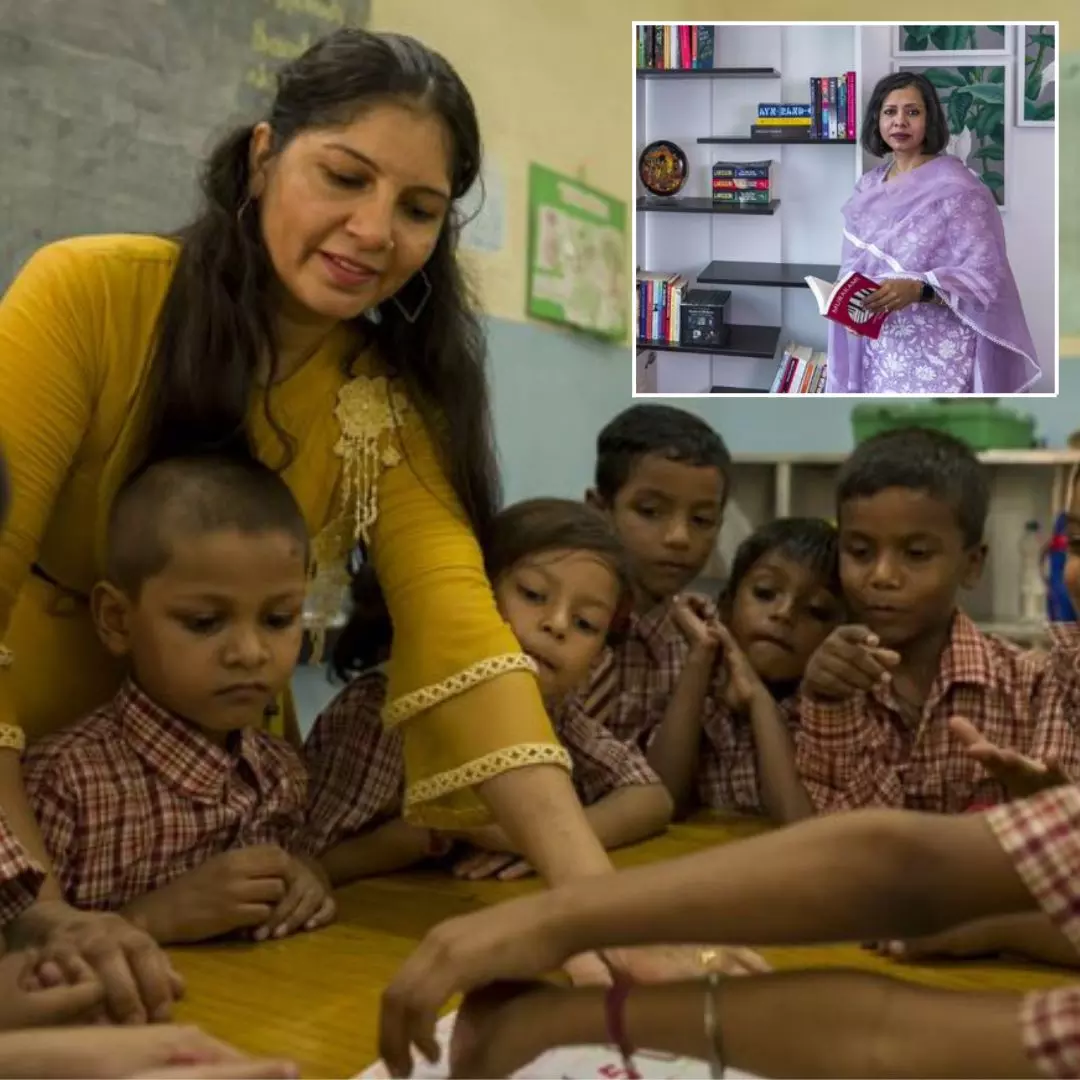
Image Credits: From the source
'Reach To Teach': Know How This Organisation Crafts Joyful Learning Experiences In Government Schools
India, 23 Dec 2022 6:21 AM GMT | Updated 9 Jan 2023 6:51 AM GMT
Editor : Jayali Wavhal |
She writes about gender issues, human interest, and environment.
Creatives : Laxmi Mohan Kumar
She is an aspiring journalist in the process of learning and unlearning many things. Always up for discussions on everything from popular culture to politics.
Reach to Teach (RTT) is a social impact organisation that has impacted over 10 million children by taking innovative and joyful learning experiences to the classrooms of government schools.
Reach to Teach (RTT) is a social impact organisation that partners with State Governments to improve the quality of teaching and learning in government schools and make it a joyful experience. At a time when countries are competitively bringing together challenging curriculums just to secure a place among the top global rankings, this organisation focuses on ensuring that students enjoy the process of learning. They make it a point to look at how the system can be improved for their benefit.
Speaking to The Logical Indian, the Chief Executive Officer (CEO) of RTT, Ratna Viswanathan takes us through the crafting of this learning experience and how they brought back joy to the classrooms in the past few years.
Frugal Innovation Is The Key
India has a total of about 1.51 million schools, out of which at least one million are government schools, run by central and state governments. Out of the total 264.4 million children attending the schools in the country, about 50.5 per cent of them attend government schools. With more than half the country's school-going population enrolled in government-run schools, there have been consistent efforts to improve and improvise the system for their betterment.
Talking about this, Ratna says that her vision for the project has been three-fold. The first idea is that they work exclusively with government schools. Secondly, they work towards creating joyful learning places within these government schools so that "children learn happily and teachers teach happily" - both of which Ratna believes are not in abundance currently. Lastly, RTT's larger focus lies within underserved states. From their experience, they confidently break past the misconception that education progresses in the face of expensive gizmos, state-of-the-art classrooms and sophisticated teaching and learning materials. It is when the learning process is made joyful for both students and teachers that true progress can be seen within the system.
Working with the underserved states, RTT enabled a quality learning experience with this idea and also inculcated the concept of "frugal innovation." This concept has been popularised worldwide across multiple sectors, from healthcare to multinational businesses. The underlying idea of it is to be able to offer maximum performance with available tools without compromising on quality. In simpler terms, Ratna conveyed that you don't really need the best infrastructure, state-of-the-art classrooms, big tech appliances, and the latest Teaching and Learning equipment to create a quality learning experience. It's essentially about what one can create value out of with what is available. They are driving a change by doing things differently and enabling a joyous space within the local level of learning.
To ensure that students truly found joy in learning and did not go back to learning by rote, there was a need to strengthen design, structure, and environment. At RTT, they collectively channel their efforts into building this learning environment by enthusing parents and teachers, making them an intrinsic part of the child's learning journey. They believe that it is only when the environment is positively changed that it can impact the learning experience of the student. For this, parents need to recognise the value of sending children to school, and teachers should want to teach. Over many years, RTT worked to connect these dots and craft a learning experience that stays with the student.
RTT's story began with a school in a bus that went out to tribal areas in Gujarat to bring children into the education fold. At present, they are working continuously with communities at the field level with Government Education Departments. Since 2007 they have been working with the northeast schools. Here they often have to consider the diversity of the terrain, where the internet is sometimes not a viable option. In such regions, the team is constantly striving to find solutions that work best locally and incorporate them into the design for disseminating teaching and learning. They explore multi-modal approaches to ensure the furthest possible outreach and focus on creating an enabling environment for learning.
Change Starts From Student's Environment
Ratna believes that learning happens when it is supported by an enabling environment. Making learning joyful for students then comes along with the prerequisite of bringing back the agency to teachers. In Ratna's words, "At the end of the day, if the teacher doesn't have interest in teaching, the child is certainly not going to have an interest in learning." So, a blend of inquiry, engagement, and many other elements that ultimately leads to greater action, is what RTT tries to do at its core.
Teachers are constantly consulted on activities that could engage a child. Be it stories, games, or dramatising - no one knows the student better than the teachers, and RTT taps into this collaborative concept. Putting together the knowledge that the teachers possess and creating engaging sessions for the children has been a huge amount of learning for people involved in RTT as well, says Ratna.
However, this is only the tip of the iceberg regarding the possibilities that lie latent in such educational spaces. To date, Reach to Teach has impacted 50,225 schools, 2,89,653 Head Teachers and teachers, and 79,33,140 children. By 2025, they aim to create an impact over five states, 1,00,000 schools, 4,00,000 Head Teachers and teachers, and 10 million children. They are currently focused on creating the content and training for the government schools in the northeastern region, and will soon be growing into newer geographies to tap into more possibilities.
Also Read: Education For All! This Tech-Driven Platform Empowers Parents To Drive Learning For Children At Home
 All section
All section














